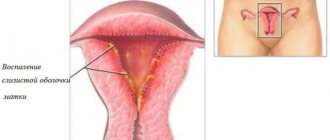Edema: symptoms, causes and treatment
- Main causes of edema
- Consequences of edema
- Fighting swelling
Swelling can be hidden or obvious. Obvious swelling is easy to recognize immediately - a limb or area of the body increases in size, and stiffness in movement appears. Hidden edema may be indicated by a sharp increase in body weight or a decrease in the frequency of urination.
The most common type of edema is peripheral edema, which occurs when the ankles, feet, legs, or area around the eyes become swollen. But sometimes, in severe conditions, swelling of the entire body develops. This type of swelling is called anasarca.
Main causes of edema
Sometimes swelling occurs if a person is forced to remain in one position for a long time . For example, you may notice swelling in your legs after a long airplane flight.
In women, edema can develop during menstruation due to changed hormonal levels. Pregnancy is also a condition that promotes the development of edema. In this case, the volume of circulating blood increases and, under the influence of the growing uterus, pressure on the internal organs and tissues increases.
Taking certain medications (medicines to control blood pressure, non-steroidal anti-inflammatory drugs, oral contraceptives, some medications for the treatment of diabetes) also provokes the development of edema .
However, in some cases, edema occurs as a result of serious illnesses that require immediate consultation with a doctor.
Chronic heart failure
The heart plays the role of a pump in our body, thanks to which blood circulates from the lungs to the organs and tissues, saturating them with oxygen. If the work of the heart is disrupted, blood is retained in the periphery, and the person develops swelling of the legs, ankles, and lower back.
Usually the legs swell in the late afternoon. When you press on the area of edema, a dimple is left that slowly disappears. As the disease progresses, the flow of blood from the lungs is impaired. Then a cough and moist wheezing appear.
In severe cases, the outflow of blood from internal organs is disrupted. Fluid accumulates in the abdominal cavity, and the stomach increases in size. This condition is called ascites.
Kidney diseases
With kidney disease, conditions are created for sodium and fluid retention in the body. Unlike cardiac edema, renal edema increases in the morning. Swelling of the face and area around the eyes is common. The arms and legs swell, especially the ankles and shins.
When kidney function is impaired, the so-called nephrotic syndrome develops. In this case, protein is lost in the urine, the protein content in the blood decreases, and conditions are created for the accumulation of fluid in the tissues. You may notice that your urine becomes foamy, your appetite decreases, and weight gain occurs due to fluid retention in the body.
Cirrhosis of the liver
Some hereditary diseases, hepatitis B or C, alcohol abuse, and endocrine disorders can lead to liver cirrhosis. If the liver malfunctions, the outflow of blood from the internal organs is disrupted, protein production in the body decreases, swelling of the legs develops, and fluid accumulates in the abdominal cavity (ascites).
Early symptoms of liver cirrhosis may include nausea, loss of appetite, weight loss, weakness, and increased fatigue.
Impaired blood flow
If an obstruction occurs in the path of blood outflow, edema develops. This can happen, for example, if the deep veins of the legs are blocked by blood clots. If you have deep vein thrombosis, you may feel pain in your leg or notice redness.
In addition, a growing tumor can interfere with the flow of blood through the lymphatic or blood vessels. These conditions are life-threatening and require urgent medical attention.
Allergic reaction
Allergic edema can be caused by foods, medications, flowers, animals, or insect bites, to which a person has developed hypersensitivity. The difference between allergic edema is that it develops suddenly, literally in a few minutes. The person does not experience pain, but allergic edema is one of the most life-threatening. Swelling of the larynx and tongue can cause suffocation and death.
Preeclampsia
Preeclampsia is a serious complication of pregnancy. Edema in preeclampsia is accompanied by increased blood pressure and impaired renal function. This is a very dangerous condition that threatens the life of both the mother and the unborn child. Therefore, you should visit your doctor regularly during pregnancy. Only he will be able to distinguish minor swelling during pregnancy from a critical condition.
Consequences of edema
It is important to recognize edema that poses a threat to human life. First of all, this is allergic swelling. If it develops, the person must be helped immediately, otherwise death due to suffocation is possible. It is extremely dangerous if the swelling has developed due to a blood clot. The clot or part of it can move further along the blood vessels. Then there is a risk of developing a heart attack, stroke and other life-threatening conditions.
If edema is one of the symptoms of preeclampsia, it can threaten placental abruption, fetal death, retinal detachment, stroke, and eclampsia (convulsions that can be fatal).
With constant and progressive swelling of the legs, stiffness in movements increases, difficulties arise when walking; skin stretches; the elasticity of arteries, veins and joints decreases; the blood supply is disrupted and the risk of infection of the area of edema and the development of ulcers on the skin increases.
Fighting swelling
Minor swelling may go away without the help of a doctor. If swelling persists for a long time or develops suddenly, this is an alarming symptom. You need to see a doctor urgently.
Possible complications and consequences
Ascites is a serious pathological condition that requires urgent treatment. If therapy is not carried out and the fluid continues to accumulate, complications that are incompatible with life develop.
There is a high probability of inflammation of the peritoneum - peritonitis, cardiac or respiratory failure. Possible development of intestinal obstruction, diaphragmatic or umbilical hernia, hydrothorax, inflammation of the esophagus. Against the background of severe edema, all life-supporting organs and systems begin to fail, the functioning of which is disrupted due to accumulated fluid.
Asked by: Igor
Gender: Male
Age: 47
Chronic diseases: not specified
Diuretics don’t seem to help, I drank furosemide 1 time to get a little water out, the next day it didn’t, 2 tablets of diuvera also don’t help, shortness of breath while sitting and lying down especially when I fall asleep, I practically don’t go to the toilet, I don’t add salt to my food, it still makes no sense , legs and stomach are swollen with water, the feeling of fullness inside is just water, what should I do? Should I take other medications? Below is the conclusion in the form of a file about the disease and complications, as well as about the doctor’s prescribed treatment, which I doubt, thanks in advance
Enlarge Enlarge
Ascites is an abundant accumulation of fluid in the abdominal cavity, leading to pronounced swelling of the abdomen. In common parlance, ascites is called dropsy, or a skin bag. People of any age, including infants, are susceptible to the disease.
. Swelling of the abdomen, the causes of which can be very different, is often accompanied by pain, shortness of breath and a feeling of discomfort, and sometimes itching and pain.
Sometimes the size of the swelling is comparable to the size of the abdomen of a woman in the last stages of pregnancy. If the patient is in a supine position, the swelling spreads to the sides
. The navel of all those suffering from ascites is strongly bulged outward. Another sign of ascites is a developed venous network on the abdomen, which becomes very noticeable.
Swelling of the legs
Share
IMPORTANT!
The information in this section cannot be used for self-diagnosis and self-treatment. In case of pain or other exacerbation of the disease, diagnostic tests should be prescribed only by the attending physician. To make a diagnosis and properly prescribe treatment, you should contact your doctor.
- Inflammatory and non-inflammatory edema.
There are inflammatory and non-inflammatory edemas. The former develop against the background of inflammation and are characterized by the presence of redness, pain, and increased temperature of the soft tissues at the site of inflammation, which in most cases is not characteristic of non-inflammatory edema.
- Localized and generalized edema.
According to the prevalence, edema can be localized and generalized. Localized (local) swelling occurs in specific areas of the body, for example, on the legs. Generalized swelling occurs in several places at once (on the legs, lower back, face) or even throughout the body.
- Unilateral and bilateral swelling.
To understand the cause of edema, such a characteristic as symmetry is important, therefore swelling of the legs is divided into bilateral and unilateral.
- heart failure;
- chronic venous insufficiency, varicose veins, thrombosis of the veins of the lower extremities;
- disruption of the outflow of lymph through the lymphatic vessels in case of parasitic diseases, after injuries and operations;
- soft tissue infections of the lower extremities.
- renal failure due to congenital or immunoinflammatory diseases, long-term arterial hypertension, diabetes mellitus, uncontrolled use of medications, severe chemical poisoning;
- liver failure due to hepatitis, cirrhosis, fatty liver degeneration;
- long-term diseases of the gastrointestinal tract (gastritis, enteritis, chronic pancreatitis, Crohn's disease, etc.), as well as a strict protein-free diet, which results in malabsorption and protein deficiency.
- cardiologist;
- nephrologist;
- gastroenterologist-hepatologist;
- endocrinologist;
- vascular surgeon;
- dermatologist.
- urinalysis and urine albuminuria test to assess kidney function;
- a comprehensive biochemical blood test, including determination of the concentration of albumin and total protein in the blood, creatinine with calculation of glomerular filtration rate and urea (indicators of the urinary system), enzymes ACaT, ALaT, alkaline phosphatase, bilirubin and its fractions, reflecting the condition of the liver;
- blood testing for signs of HIV infection, hepatitis B and hepatitis C to identify possible liver damage;
- coagulogram, showing the activity of the blood coagulation system and indirectly reflecting the possibility of thrombus formation in the veins of the lower extremities;
- study of the concentration of a marker of heart failure - natriuretic peptide to confirm or exclude heart failure;
- study of the concentration of electrolytes in the blood, reflecting the state of the adrenal glands, the hormones of which play a significant role in maintaining water balance;
- coprogram - a stool analysis that reflects the state of the digestive system (in this case it is necessary to analyze the absorption of proteins and other substances in the gastrointestinal tract);
- electrocardiogram to exclude or confirm heart disease;
- echocardiography to determine the contractility of the heart;
- ultrasound examination of the abdominal organs, primarily the kidneys and liver;
- 24-hour blood pressure monitoring;
- Doppler ultrasound of the veins of the lower extremities to determine their patency and the quality of functioning of the venous valves.
IMPORTANT!
The information in this section cannot be used for self-diagnosis and self-treatment. In case of pain or other exacerbation of the disease, diagnostic tests should be prescribed only by the attending physician. To make a diagnosis and properly prescribe treatment, you should contact your doctor.
Fighting leg swelling
The problem of leg swelling is very relevant, especially in the summer. The main reason for their formation is considered to be high ambient temperatures, because this is negatively noted in the blood microcirculation. This in turn leads to the accumulation of excess fluid in the body. Water is retained and causes swelling to form.
We must not forget that swelling in the legs requires medical assistance; drugs should be taken that are endowed with the ability to stimulate lymphatic drainage and strengthen blood vessels. They can be produced in various forms; they need to be applied to the feet every day using massage movements in the direction from bottom to top.
Self-massage of the feet is characterized by a high level of effectiveness; it begins with the big toe and goes up. Particular attention should be paid to biologically active points that are localized on the nail plate and the base of the finger.
To eliminate the manifestations of edema, it is recommended to massage the legs under a contrast shower. Excellent results are also observed with contrast baths; they can eliminate leg fatigue, a feeling of heaviness and swelling. For this purpose, you need to keep your feet alternately in hot and cold water (about 5 minutes each).
No less useful are foot baths, the preparation of which uses sea salt. The water temperature should not be higher than 35 degrees. You can also use regular table salt. You need to keep your feet in the water for ten minutes, after which they are wrapped in a towel.
If your feet are tired and swollen, you can try a massage using pieces of ice. The highest level of effectiveness is observed if the ice is made from decoctions of medicinal herbs, such as:
- sage;
- mountain arnica;
- chamomile;
- yarrow;
- peppermint;
- eucalyptus.
Properly selected shoes play a significant role in reducing swelling of the feet, especially if you need to be on your feet for a long time. You need to give up high heels and flat soles.
Hidden edema and its diagnosis
How often does a condition occur when the condition is uncertain and it is difficult to determine the cause of the ailment. Your legs get tired quickly, and your arms feel like cotton wool. If you consider these symptoms, you can determine that the tissues are swelling, and everyone evaluates this condition differently. There is an obvious manifestation, but there are often patients who have hidden swelling.
The exact place where they occur, with what regularity and intensity, determine both the diagnosis of the disease and the treatment.
It must be prescribed by a doctor, since it is impossible to independently determine the cause of edema and use medications. A mistake can be costly and will not only worsen the condition, but also affect subsequent treatment.
Causes
The reasons why edema develops can be influenced by many factors. The swelling can be episodic, and over time the person will forget that in the morning there was slight swelling in the eye area, or that the legs were swollen from prolonged walking. But if the symptoms are regular, it is worth considering that the body is signaling a problem. Diseases such as:
- glomerulonephritis (both chronic and acute forms);
- nephrosclerosis in diabetic patients;
- nephropathy of pregnancy, both in early and late stages;
- osteochondrosis of the thoracic spine;
- other kidney diseases;
- cardiovascular diseases.
Treatment
As practice has shown, it is categorically not recommended to prescribe treatment for yourself. This is due to the fact that the disease is so insidious and can camouflage itself that only a complete examination can establish the cause of the edema.
It is a misconception to believe that an ultrasound scan, which can be done for a fee, or a computed tomography scan will allow you to determine the extent of the disease, and most importantly, its exact name.
It is impossible to establish an accurate diagnosis and prescribe treatment based on these indicators alone. The Ziminitsky test is mandatory in such cases, and this is a lengthy and patience-requiring analysis.
If a patient independently prescribes diuretics to reduce swelling, this can lead to the development of a hypovolemic crisis, and this is a dangerous complication. The patient should consult a number of doctors:
Only after this, based on a complete picture, can we say that the treatment will be effective.
Pregnancy
During pregnancy, the expectant mother experiences many changes, and the body adapts to a new life. However, these changes are not always without consequences.
Hidden swelling is a very common symptom, especially in the last stages. With regular swelling, it is worth thinking about the causes and how to avoid it. Control of water-salt metabolism in the body of a pregnant woman is mandatory.
Since edema can be temporary, associated with the special situation of a woman, there is no need to worry about it in every case. Swelling occurs:
- physiological;
- pathological (in this case, the pathology is caused by a problematic pregnancy);
- pathological, caused by exacerbation of chronic diseases of the expectant mother.
It is especially difficult to identify edema, especially hidden edema, since it is difficult to understand whether it is the fetus growing or fluid accumulating. In case of sudden weight gain, it is necessary to consult a gynecologist, since only he can determine the degree of swelling and whether it is normal.
Hidden edema can be excluded only by passing tests, so most often the pregnant woman is sent to the hospital. Such tests take a long time and must be carried out under the supervision of medical staff and with a certain regularity, for example, the Ziminitsky test.
For physiological reasons, a woman needs more blood, and more fluid is required to replenish. Thirst appears, and in the last stages the uterus puts pressure on certain organs, and this makes it difficult to remove fluid from the body. So small changes can be considered the norm.
Key Aspects
Sweating is considered a physiological process; it helps exchange heat and remove excess moisture, salts and toxic substances from the body. However, if its production is observed in large quantities, then this is a pathological process that requires treatment.
First of all, it is necessary to focus on the fact that excessive sweating is commonly called hyperhidrosis. Its formation occurs as a result of dysfunction of the sweat glands.
To successfully treat hyperhidrosis, there must be a specific reason for its formation. A similar situation arises with swelling of the legs. It usually appears as a result of exposure to excess pressure over a long period of time, so we can confidently say that overweight people suffer from swelling of the legs. To eliminate the symptoms of edema, you need to normalize the body's metabolic processes and exercise control over the condition of your figure.











